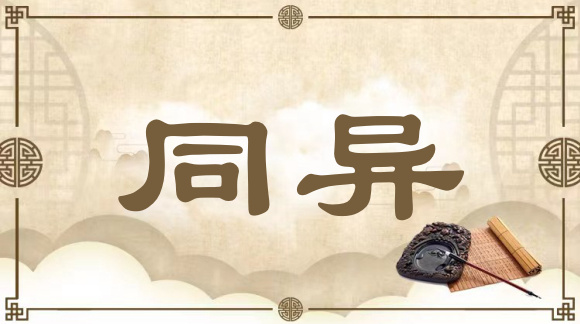Commonality and Difference

相同和不同。“同异”是事物之间的一种基本关系。事物一旦获得独立于他者的界限,就会面临与他者的“同异”关系。对事物间“同异”关系的判断,是认识与安顿事物的基础。古人大多认为,应基于对事物间“同异”关系的清晰界定和准确把握,通过建构整体性的秩序,对事物做出合理的安置。也有人主张,应看到“同异”关系的相对性,进而在认识与心灵层面突破“同异”关系的限制。
Tong (同commonality) and yi (异difference) are opposing concepts that underpin a fundamental relationship among things. When distinct boundaries separate one thing from another, it implies that these two entities share some similarities while also showing differences in various aspects. The assessment of commonality and difference among things is crucial for their recognition and arrangement. In ancient times, many believed that things should be arranged in a rational manner according to an overall order, which was established on the basis of clear definition and accurate comprehension of the commonality and difference among things. Some others advocated acknowledging the relativity of the concepts of commonality and difference and thus breaking away from the constraints of such a relationship in the cognitive dimensions.
引例 Citations:
◎夫礼者,所以定亲疏、决嫌疑、别同异、明是非也。(《礼记·曲礼上》)
礼是确定亲疏关系、决断疑惑之事、区别同异、辨明是非的依据。
Rites are the basis for determining proper human relations, clarifying ambiguities, differentiating between things, and telling right from wrong. (The Book of Rites)
◎自其异者视之,肝胆楚越也;自其同者视之,万物皆一也。(《庄子·德充符》)
从事物相异的一面去看,肝胆相邻却好像楚国和越国之间相隔遥远;从事物相同的一面去看,万物都是一样的。
From the standpoint of difference, the liver and the gallbladder may appear worlds apart, just as the states of Chu and Yue. Yet, when viewed through the lens of commonality, all things can be seen as the same. (Zhuangzi)
推荐:教育部 国家语委
供稿:北京外国语大学 外语教学与研究出版社
责任编辑:钱耐安





